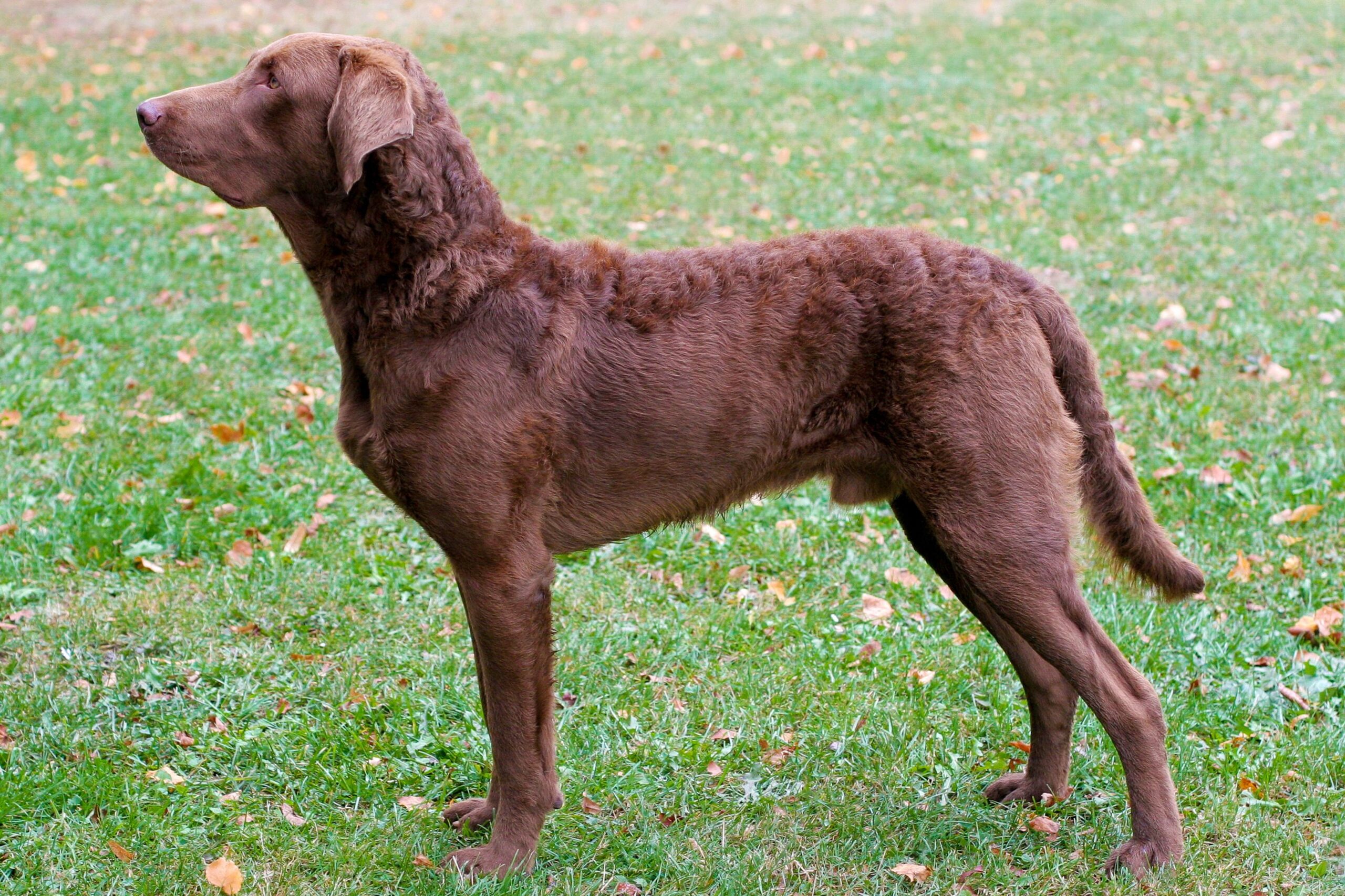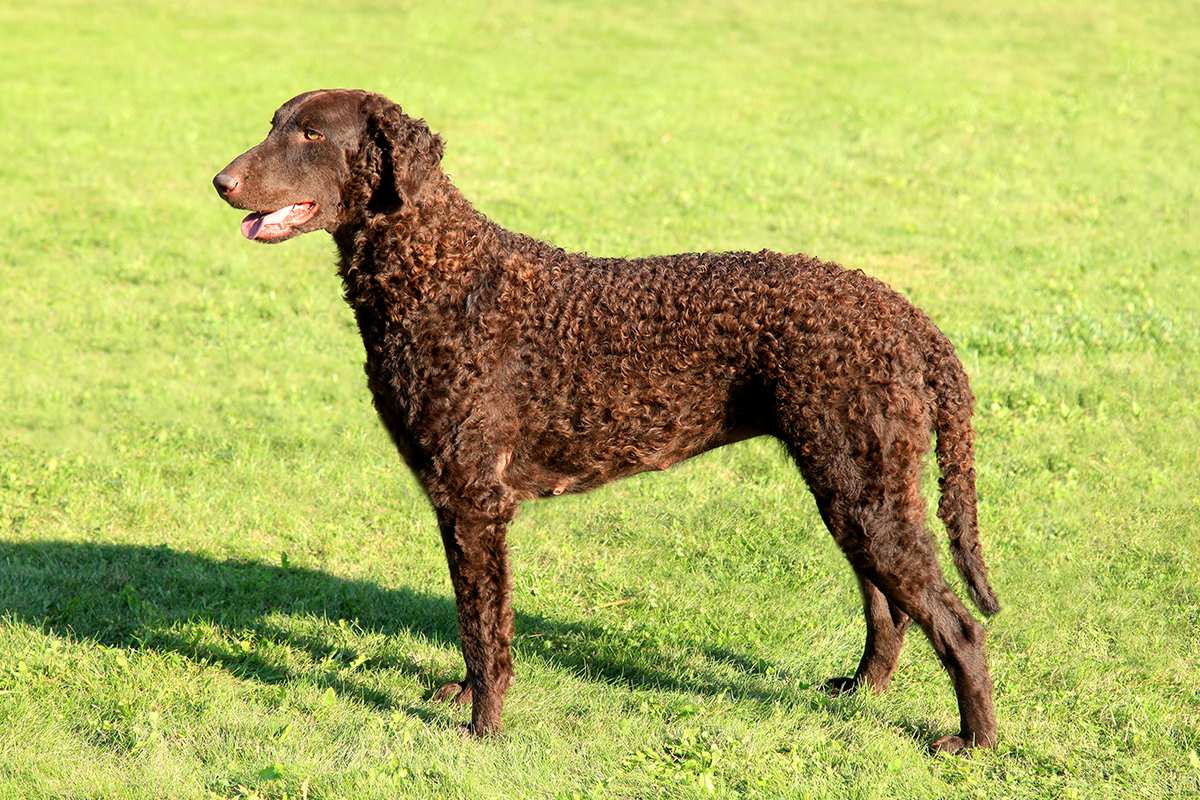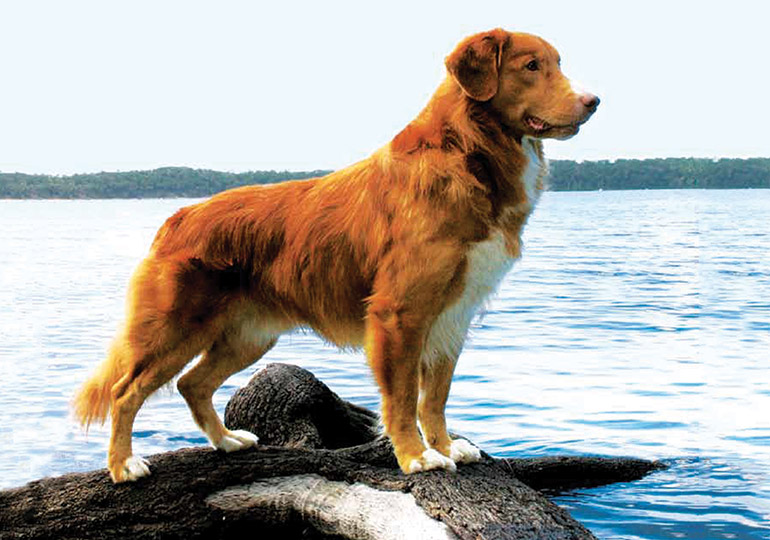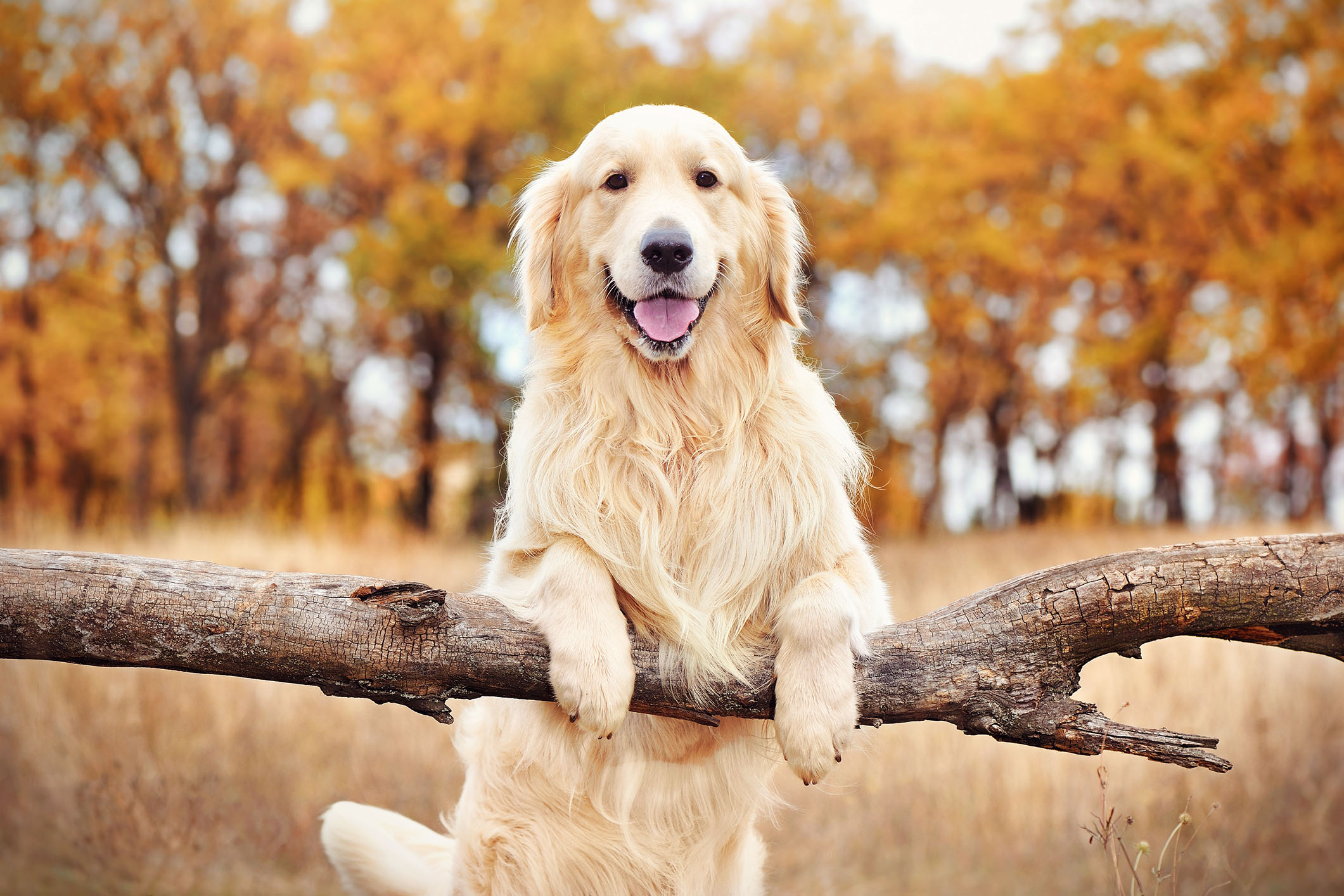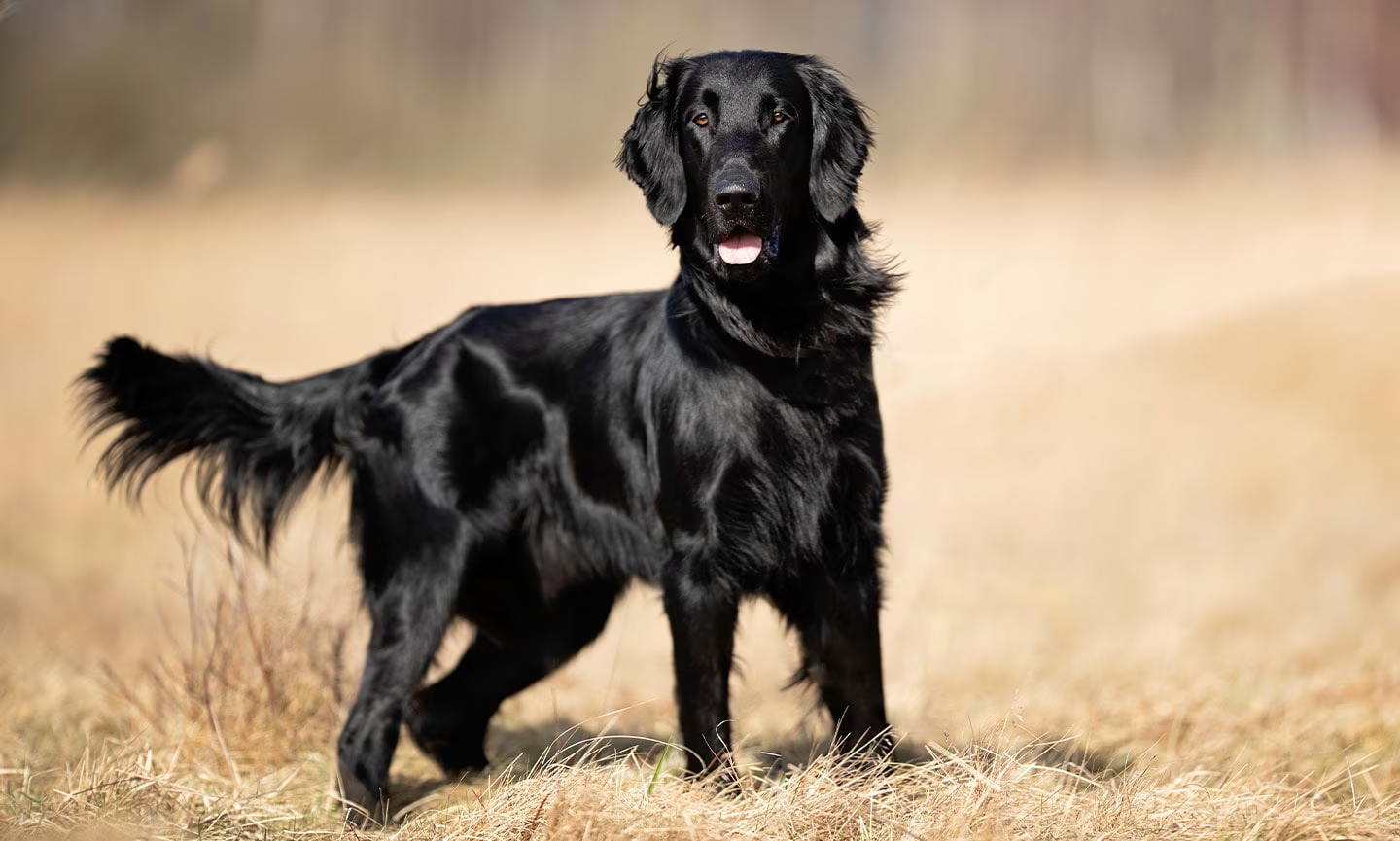In the world of retrieving breeds, the Chesapeake Bay Retriever stands apart as a uniquely American original – a powerful, rugged athlete developed for the challenging conditions of the Chesapeake Bay region. While Labradors and Goldens may get more attention, “Chessies” (as their devotees affectionately call them) represent something special: a retriever with unmatched determination, distinctive personality, and a fascinating history deeply rooted in American waters.
At pawtrix.wiki, we aim to provide comprehensive information on all dog breeds, and the Chesapeake Bay Retriever deserves special focus both for its remarkable capabilities and its status as one of America’s few homegrown retrievers. Unlike breeds imported and refined from elsewhere, Chessies were developed entirely in America to meet specific challenges that no existing breed could adequately address.
What sets Chesapeake Bay Retrievers apart from other retrieving breeds is their unique combination of physical toughness, independent thinking, and unwavering loyalty. Developed to retrieve waterfowl in the frigid, rough waters of the Chesapeake Bay during brutal winter conditions, these dogs possess a distinctive oily, wavy coat, powerful swimming ability, and the mental fortitude to work tirelessly in conditions that would defeat many other breeds.
Throughout this guide, we’ll explore everything that makes Chesapeake Bay Retrievers special – from their fascinating rescue-at-sea origin story to their distinctive traits, care requirements, and whether they might be the perfect match for your lifestyle. By the end, you’ll understand why Chessie enthusiasts are so passionate about these powerful, devoted retrievers and why the breed continues to excel in both working roles and as family companions for the right homes.
American Origins: A Truly Homegrown Retriever
The Chesapeake Bay Retriever has one of the most fascinating origin stories of any dog breed – a tale that exemplifies American ingenuity and the development of a purpose-built working dog to meet specific regional challenges.
A Rescue at Sea and Remarkable Beginning
The breed’s story begins with a shipwreck off the coast of Maryland in 1807. An English ship foundering in the rough waters of the Atlantic was rescued by an American vessel. Among the rescued cargo were two Newfoundland puppies – a dingy red male named “Sailor” and a black female named “Canton.” These puppies were given to different people along the Maryland shore as thanks for assistance during the rescue.
These two Newfoundlands, though never bred to each other, became foundation stock for what would eventually become the Chesapeake Bay Retriever. They were bred to local dogs including hounds, water dogs, and possibly spaniels and setters. The resulting progeny showed remarkable aptitude for retrieving waterfowl in the challenging conditions of the Chesapeake Bay region.
What’s particularly interesting is that this breeding wasn’t conducted by aristocrats or kennel clubs, but by working market hunters and waterfowl hunters who needed highly effective retrieving dogs for their livelihood. They selectively bred for specific traits that would make the ultimate water retriever for the unique conditions of the Chesapeake Bay:
- Ability to work in icy water for extended periods
- Physical strength to handle rough waves and currents
- Coat that repelled water and dried quickly
- Incredible stamina for retrieving dozens of birds per day
- Determination and mental toughness to continue working in harsh conditions
Evolution and Recognition
By the 1880s, these dogs had developed into a distinct type, though they still showed some variation. In 1885, the American Kennel Club recognized the Chesapeake Bay Retriever as a distinct breed, making it one of the first breeds recognized by the AKC. The Chesapeake Bay Retriever Club was founded soon after in 1918 to promote and preserve the breed.
The breed standard gradually refined the type, emphasizing the distinctive physical characteristics that made these dogs so effective as water retrievers. Unlike many breeds that underwent significant changes when transitioning from working dogs to show dogs, the Chesapeake has maintained its working characteristics, with the breed standard designed to preserve the functional traits that define the breed.
In 1964, the Chesapeake Bay Retriever was named the official dog of Maryland, honoring its deep connection to the region’s history and culture.
Working Heritage and Modern Roles
Originally developed specifically for retrieving ducks and geese in the challenging Chesapeake Bay region, these dogs were legendary for their abilities. Historical accounts describe individual Chessies retrieving hundreds of birds in a single day under brutal conditions, working tirelessly despite icy water and rough weather.
Contemporary Chesapeake Bay Retrievers continue this working tradition. While some serve primarily as family companions, many Chessies still work as hunting retrievers. Their distinctive traits make them particularly valuable for:
- Waterfowl hunting in cold, harsh conditions
- Upland game hunting where determination is required
- Search and rescue operations, particularly in water
- Various dog sports including field trials, hunt tests, and dock diving
- Guard and protection work due to their loyalty and territorial nature
What distinguishes working Chessies from many other retrievers is their remarkable combination of physical capability and mental toughness. They’re often described as willing to take on challenging water conditions that might deter other retrievers, demonstrating the determination that made the breed famous among waterfowl hunters for generations.
The Distinctive Chessie: Built for Function
The Chesapeake Bay Retriever’s appearance clearly reflects its development as a working water retriever in challenging conditions. Every aspect of the Chessie’s physical structure serves a practical purpose, creating a dog that combines power with specialized adaptations for water work.
Size and Structure: The Powerful Retriever
Chesapeake Bay Retrievers are powerfully built, medium to large dogs:
- Males typically stand 23-26 inches at the shoulder and weigh 65-80 pounds
- Females typically stand 21-24 inches and weigh 55-70 pounds
- Body is slightly longer than tall, with substantial bone
- Chest is deep and broad, providing power for swimming
- Overall build combines strength with moderate agility
Their structure reflects their original purpose as water retrievers under difficult conditions. They’re powerfully built for strength and endurance rather than speed, with a body designed to handle cold water, rough waves, and the physical demands of retrieving large waterfowl like geese.
The Chessie’s hindquarters are particularly powerful, providing the driving force needed for swimming through rough water and navigating muddy shorelines. Their moderately broad skull, powerful jaws, and medium-length muzzle reflect the need to carry large waterfowl without fatigue over potentially long distances.
The Distinctive Coat
Perhaps the most unique feature of the Chesapeake Bay Retriever is its specialized coat:
- Short, thick, double coat with a woolly, insulating undercoat
- Distinctive wavy appearance on neck, shoulders, and back
- Naturally oily texture that repels water
- Colors range from dark brown to light deadgrass, allowing camouflage in various environments
- Feels slightly harsh to the touch, almost waterproof in quality
This specialized coat served critical purposes for a dog working in the cold waters of the Chesapeake Bay region. The natural oils provide water resistance, allowing the dog to dry quickly after retrieving – a crucial advantage when working in cold conditions where a soaked coat could lead to hypothermia. The dense undercoat provides insulation against cold water, while the slightly harsh outer coat sheds mud and debris easily.
The accepted colors – variations of brown from dark liver to deadgrass – provided natural camouflage in the marshy environments where these dogs worked. The three color variations (brown, sedge, and deadgrass) each matched different vegetation and conditions found in the Chesapeake Bay region.
The Alert Expression
Chesapeake Bay Retrievers have a characteristic head and expression:
- Broad, round skull with a medium stop
- Intelligent, amber or yellowish eyes that communicate alertness
- Expression often described as bright, alert, and independent
- Medium-sized ears set high on the head
- Overall appearance suggesting intelligence and determination
The Chessie’s expression is one of their most distinctive features – intelligent and aware, with none of the soft, eager-to-please look of some other retrievers. Their eyes should be medium-sized, very clear, and of yellowish or amber color, reflecting the breed’s independent, thoughtful nature.
This alert, somewhat reserved expression accurately reflects the Chessie’s temperament – intelligent, independent, and watchful rather than immediately friendly with strangers. It’s the look of a working dog that thinks for itself while maintaining strong connections to its human partners.
Built for Swimming
Several physical features specifically adapt Chesapeake Bay Retrievers for water work:
- Webbed feet for swimming efficiency
- Powerful, medium-length tail that functions as a rudder in water
- Well-developed chest and lungs for endurance
- Waterproof coat that dries quickly
- Strong neck for carrying heavy game birds
These adaptations reflect their development for a specific purpose – retrieving waterfowl in challenging water conditions. Unlike some retrievers developed for more varied work, Chessies were specialized for water retrieving in difficult conditions, and their physical structure clearly shows this specialization.
The Chesapeake Temperament: Independent and Devoted
Beyond their physical characteristics, Chesapeake Bay Retrievers possess a distinctive temperament that sets them apart from other retrieving breeds. Their combination of intelligence, independence, and deep loyalty creates dogs with strong character and unmistakable presence.
The Determined Worker
The Chesapeake’s working temperament is perhaps their most defining characteristic:
- Extraordinary determination and perseverance
- Willingness to work under difficult conditions
- Independent thinking and problem-solving ability
- Intense focus when engaged in tasks
- Tireless work ethic when properly motivated
This remarkable determination is what made Chessies legendary among waterfowl hunters. Historical accounts describe these dogs breaking ice, swimming in freezing conditions, and retrieving hundreds of birds in a single day – continuing to work when other retrievers had given up.
Unlike some retrieving breeds that work primarily to please their handlers, Chessies typically work because they love the job itself. This creates dogs with incredible stamina and willingness to tackle difficult conditions, but it also means they typically require thoughtful training that respects their independent nature.
The One-Family Dog
Chesapeake Bay Retrievers form intense bonds with their families:
- Deeply loyal to their chosen people
- Protective of home and family
- Often bond most strongly with one person while being affectionate with all family members
- Reserved or aloof with strangers
- Excellent memory for both people and situations
This loyalty creates dogs that are deeply devoted to their families, often showing strong protective instincts and territorial behavior. Unlike the immediately friendly Golden or Labrador Retriever, Chessies typically take a more measured approach to new people, assessing them before deciding whether to accept them.
This reserved nature with strangers doesn’t stem from fearfulness but rather from strong discrimination – Chessies typically know exactly who belongs in their territory and who doesn’t. This makes them excellent watchdogs and natural guardians, though not aggressive without cause when properly bred and socialized.
Intelligence and Trainability
Chesapeake Bay Retrievers combine intelligence with independent thinking:
- Highly intelligent problem-solvers
- Remember both positive and negative experiences
- Think for themselves in working situations
- Can be stubborn if they don’t see the purpose in commands
- Thrive with consistent, fair training that respects their intelligence
Their intelligence is geared toward practical problem-solving rather than rote obedience. Chessies often assess situations independently and make decisions based on their judgment – a trait that served them well when retrieving under difficult conditions where handler input might be limited.
This independence means they’re typically not as immediately biddable as some retrievers. Training a Chessie generally requires establishing mutual respect and helping them understand the purpose behind commands rather than expecting blind obedience. They respond well to consistent, fair training but may challenge handlers they don’t respect.
With Family and Children
With their own families, Chesapeake Bay Retrievers typically show a different side:
- Affectionate and often physically demonstrative with family members
- Gentle with family children when properly raised with them
- Protective instincts toward family members, especially children
- Desire to be included in family activities
- Often form especially close bonds with family teenagers and older children
Despite their sometimes reserved public persona, at home Chessies are typically loving, engaged family members who enjoy participation in household life. They often show remarkable gentleness with “their” children, though their size and strength mean supervision is always important, especially with very young children.
Their loyalty extends to considering themselves genuine family members rather than simply pets – they want to be included in activities and often position themselves as protectors of the family unit. This creates deep, meaningful bonds with their people but also means they don’t thrive when isolated from family life.
Living With a Chesapeake: Practical Considerations
Beyond their distinctive temperament and appearance, what’s it actually like to share your daily life with a Chesapeake Bay Retriever? Let’s explore the practical aspects that potential owners should consider.
Exercise Requirements: Physical and Mental
Chesapeake Bay Retrievers have significant exercise needs:
- Require 1-2 hours of vigorous exercise daily
- Thrive with swimming opportunities when available
- Need both physical activity and mental challenges
- Benefit from having jobs or tasks to perform
- May become destructive or difficult if under-exercised
These are working dogs built for endurance rather than quick bursts of energy. They need regular, substantial exercise to maintain physical and mental health. Simply having a fenced yard isn’t sufficient – they need active engagement and varied activities that challenge both body and mind.
Water activities are particularly satisfying for Chesapeakes, who were bred specifically for swimming. Access to safe swimming areas is ideal, though not essential if other forms of exercise are provided. Activities that engage their natural abilities – retrieving games, scent work, and problem-solving challenges – provide the most satisfaction.
Training Approach: Respect and Consistency
Successfully training a Chesapeake Bay Retriever requires understanding their independent nature:
- Start early with clear, consistent expectations
- Use positive reinforcement balanced with fair, clear boundaries
- Focus on establishing mutual respect rather than dominance
- Provide mental stimulation through varied training activities
- Recognize and work with their problem-solving intelligence
Chesapeakes respond best to training approaches that respect their intelligence and independent thinking. Harsh or heavy-handed methods typically backfire, creating resistance rather than cooperation. The most successful trainers establish themselves as fair, consistent leaders worth following rather than trying to force compliance.
Early socialization is particularly important due to the breed’s naturally reserved nature with strangers. Proper exposure to various people, animals, and situations during puppyhood helps develop a well-adjusted adult dog who can distinguish between normal situations and genuine threats.
Grooming Needs: Practical Maintenance
The Chesapeake’s specialized coat requires specific maintenance:
- Regular brushing (weekly) to remove dead hair and distribute oils
- Minimal bathing to preserve natural oils (only when truly dirty)
- Never use harsh detergent shampoos that strip protective oils
- Seasonal shedding requires more frequent brushing
- Regular ear cleaning, particularly after swimming
Their water-resistant coat is relatively easy to maintain but requires appropriate care to preserve its special qualities. Over-bathing or using harsh shampoos can strip the natural oils that make the coat water-resistant – a crucial functional feature for a water retriever.
While they shed moderately year-round, Chesapeakes typically “blow coat” seasonally, requiring more frequent brushing during these periods. Their ears need regular attention, especially if they swim frequently, as the drop ear structure can trap moisture and lead to infections if not properly cleaned and dried.
Health Considerations: Generally Robust
Chesapeake Bay Retrievers are generally healthy dogs with a lifespan of 10-13 years. Their practical development as working dogs has helped maintain good overall health, but like all breeds, they have some issues to be aware of:
- Hip and elbow dysplasia
- Progressive Retinal Atrophy and other eye conditions
- Von Willebrand’s Disease (a blood clotting disorder)
- Epilepsy in some lines
- Exercise-induced collapse in some families
Working with a reputable breeder who conducts appropriate health testing is the best way to reduce these risks. Responsible breeders screen for hip and elbow dysplasia, eye conditions, and genetic markers for conditions like exercise-induced collapse and degenerative myelopathy.
One health advantage of Chesapeakes is their lower rate of cancer compared to some other retriever breeds. Their generally robust constitution reflects their development as working dogs in challenging conditions, where health and functional ability were paramount.
Space Requirements and Home Environment
Chesapeake Bay Retrievers have specific needs regarding living situations:
- Do best in homes with secure, spacious yards
- Need access to regular exercise opportunities
- Thrive in rural or suburban environments
- Require secure fencing due to potential wandering and prey drive
- Not well-suited to apartment living in most cases
Their size, energy level, and exercise needs make Chesapeakes generally unsuitable for small living spaces without excellent access to exercise areas. They do best with room to move and secure outdoor space where they can spend time exploring and playing.
Secure fencing is essential, as their intelligence and determination mean they can become escape artists if motivated. Their territorial nature also makes good containment important – they will naturally patrol and protect what they consider their territory.
Chesapeakes and Families: Finding the Right Match
Chesapeake Bay Retrievers can make excellent family companions for the right households, but their distinctive temperament means they’re not the ideal choice for every family situation.
With Children: Protectors and Playmates
Chesapeakes typically interact well with family children:
- Often protective and gentle with “their” children
- Patient with family kids but may be reserved with visiting children
- Size and strength require supervision with very young children
- Typically form strong bonds with older children and teenagers
- Need early, positive experiences with children for best results
When raised with children, well-bred Chesapeakes often appoint themselves as protectors and companions, showing remarkable patience and gentleness despite their size and strength. They frequently form special bonds with older children and teenagers who can engage them in active play and training.
As with any dog, supervision is important, especially with very young children. A Chesapeake’s size means they can accidentally knock over small children during play, and their sometimes reserved nature with unfamiliar people means they may need careful introduction to children’s friends.
Multi-Pet Households
Chesapeake Bay Retrievers can integrate into homes with other pets with proper consideration:
- Often get along well with other dogs when properly introduced
- May show same-sex aggression more than some retriever breeds
- Can learn to live with cats, especially when raised with them
- May have strong prey drive toward small animals
- Typically respect established pet hierarchies with proper introduction
Their hunting background means they may chase small animals, so households with pets like rabbits or guinea pigs should exercise appropriate caution. Their sometimes territorial nature can create challenges with other dogs of the same sex, though this varies widely between individuals and lines.
Early socialization and proper introductions help create positive relationships between Chesapeakes and other household pets. Their intelligence means they can learn to distinguish between “family” animals and others, but their natural instincts should always be considered and managed appropriately.
The Ideal Chesapeake Home
These distinctive retrievers tend to thrive in these types of environments:
- Active, outdoor-oriented families
- Homes with secure yard space and access to water if possible
- Consistent environments with clear expectations
- Settings where they can participate in family activities
- Households willing to commit to training and socialization
They may be less ideal for:
- First-time dog owners without experience handling independent breeds
- Very busy households with little time for exercise and training
- Families seeking an immediately friendly, social butterfly dog
- Urban settings without excellent access to exercise areas
- Homes where the dog would be left alone for extended periods
The happiest Chesapeake Bay Retrievers are those who are valued as true family members and working partners, included in appropriate activities while having their exercise, training, and social needs met. Their strong character and distinctive temperament create deep, meaningful relationships with owners who understand and appreciate their special qualities.
Finding Your Chesapeake: Making the Right Match
If you’ve decided a Chesapeake Bay Retriever might be right for your family, there are several paths to consider in your search for a healthy, well-bred companion.
Working with Reputable Breeders
Finding a responsible breeder is crucial for a healthy, well-adjusted Chesapeake:
- Look for breeders who perform health testing (hips, elbows, eyes, genetic screening)
- Ask about temperament and what activities their dogs participate in
- Consider whether field/working lines or show/companion lines better suit your lifestyle
- Expect to be thoroughly interviewed about your home and expectations
- Be prepared to wait for the right puppy – good breeders often have waiting lists
Reputable breeders invest in health testing, careful breeding decisions, and proper puppy raising practices. They typically provide ongoing support throughout the dog’s life and stand behind their puppies with guarantees regarding health and temperament.
The American Chesapeake Club can provide referrals to responsible breeders, along with education about the breed’s needs and characteristics. Good breeders welcome questions and want to ensure their puppies go to homes that understand and can meet the needs of this distinctive breed.
Rescue and Adoption
For those open to adult dogs, rescue can be a wonderful option:
- Breed-specific rescues focus exclusively on Chesapeake Bay Retrievers
- General sporting dog rescues sometimes have Chessies available
- Adult dogs come with known personalities and often basic training
- Many wonderful Chesapeakes need homes due to owner circumstances, not behavior problems
- Adoption fees typically include initial veterinary care and often spay/neuter
Chesapeake Bay Retriever rescue organizations can be excellent resources, as they typically evaluate dogs carefully and work to match them with appropriate homes. Adult dogs can be particularly good choices for experienced owners, as their personalities and energy levels are already established.
Chessies sometimes end up in rescue when owners underestimate their exercise needs or are unprepared for their distinctive temperament. These dogs often make wonderful companions when placed in homes that understand and can meet their needs.
Questions to Ask Before Committing
Before bringing a Chesapeake Bay Retriever into your life, honestly assess:
- Can you provide the significant daily exercise these active dogs require?
- Do you have experience with independent, strong-minded dogs?
- Is your home environment suitable for a large, energetic dog?
- Are you prepared for their reserved nature with strangers and potential protectiveness?
- Can you commit to consistent training and socialization?
- Are you looking for a dog with the distinctive Chesapeake character?
Taking the time for self-assessment helps ensure a successful match between your lifestyle and the needs of a Chesapeake Bay Retriever. Remember that responsible ownership means meeting the dog’s needs, not just fulfilling your desire for a particular breed.
Conclusion: Is a Chesapeake Bay Retriever Right for You?
After exploring the world of Chesapeake Bay Retrievers, you might be wondering if this distinctive American breed is the right match for your lifestyle and home.
Chesapeake Bay Retrievers offer a unique combination of strength, intelligence, and unwavering loyalty that makes them exceptional companions for the right households. Their remarkable determination, distinctive appearance, and deep bonds with their chosen people create dogs with unmistakable character and presence. For those seeking a devoted, capable working partner and family protector who will face any challenge alongside you, Chessies can be ideal companions.
However, they’re not for everyone. Their exercise needs require serious commitment. Their independent nature demands consistent, thoughtful training. Their reserved approach to strangers means they’re not the social butterflies that some other retrievers are. Their protective instincts require proper management and socialization.
The perfect Chesapeake Bay Retriever owner is someone who:
- Appreciates their distinctive independent character rather than wishing for a “chocolate Lab”
- Enjoys regular outdoor activities regardless of weather
- Values a loyal, somewhat protective dog over an immediately friendly one
- Can provide consistent, respectful leadership and training
- Wants a true working partner and family member rather than just a pet
If you’re considering a Chesapeake, take time to meet multiple dogs of different ages, speak with experienced owners and breeders, and honestly assess whether your lifestyle and expectations align with the breed’s needs. Remember that choosing a dog is a commitment for the entirety of that dog’s life—ideally 10-13 years for a healthy Chesapeake.
For those who do choose a Chesapeake Bay Retriever and commit to meeting their needs, the rewards are substantial—a powerful, intelligent companion with genuine character and unwavering loyalty, who will face any challenge alongside you with determination and heart. Whether serving as a dedicated hunting partner, family protector, canine athlete, or all of these roles, the Chesapeake Bay Retriever represents a uniquely American success story in purpose-bred working dogs.
Here at pawtrix.wiki, we believe in matching the right dog with the right home. If the Chesapeake Bay Retriever’s unique combination of strength, intelligence, and loyalty speaks to you, and you’re prepared to meet their needs, you might have found your perfect canine companion—a determined, devoted partner who will stand by you in all conditions with the same steadfast resolve that made the breed legendary among waterfowl hunters for generations.
